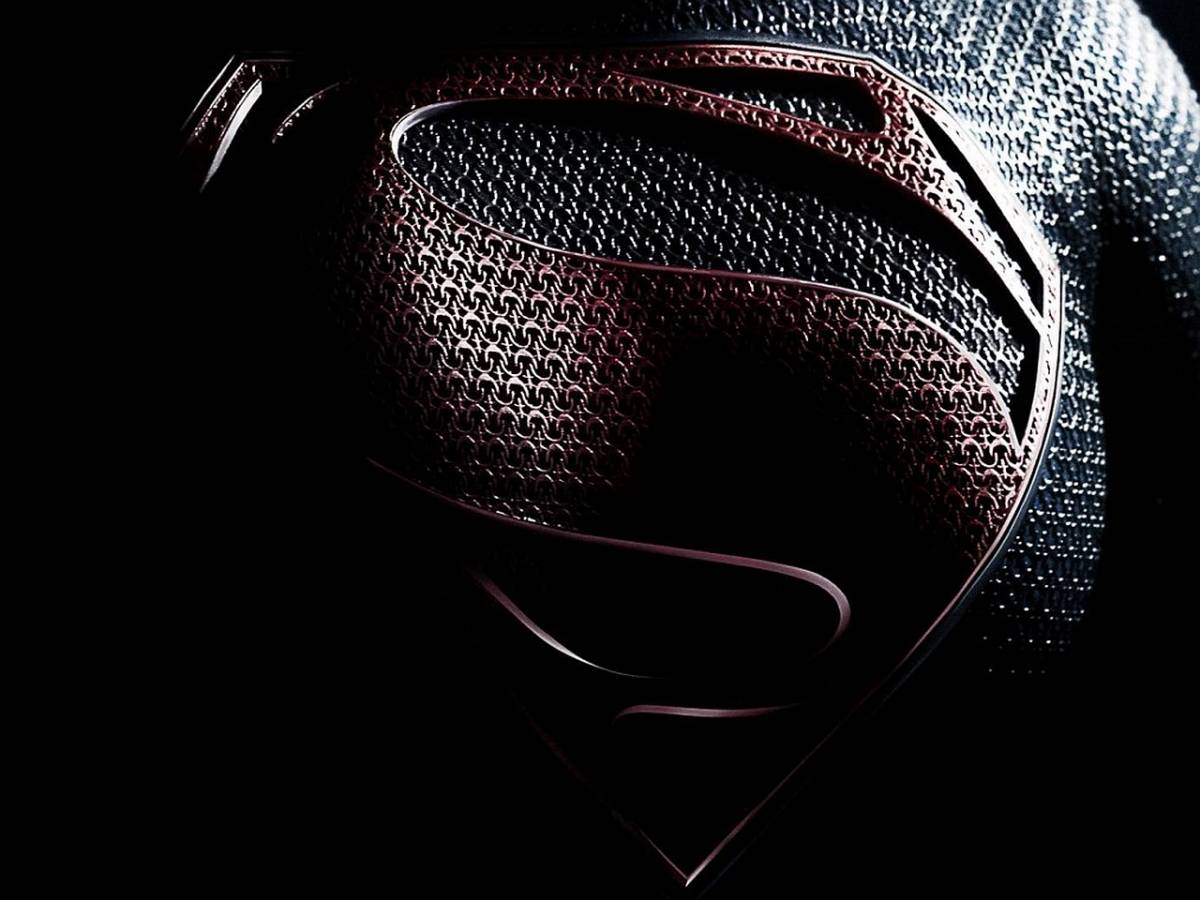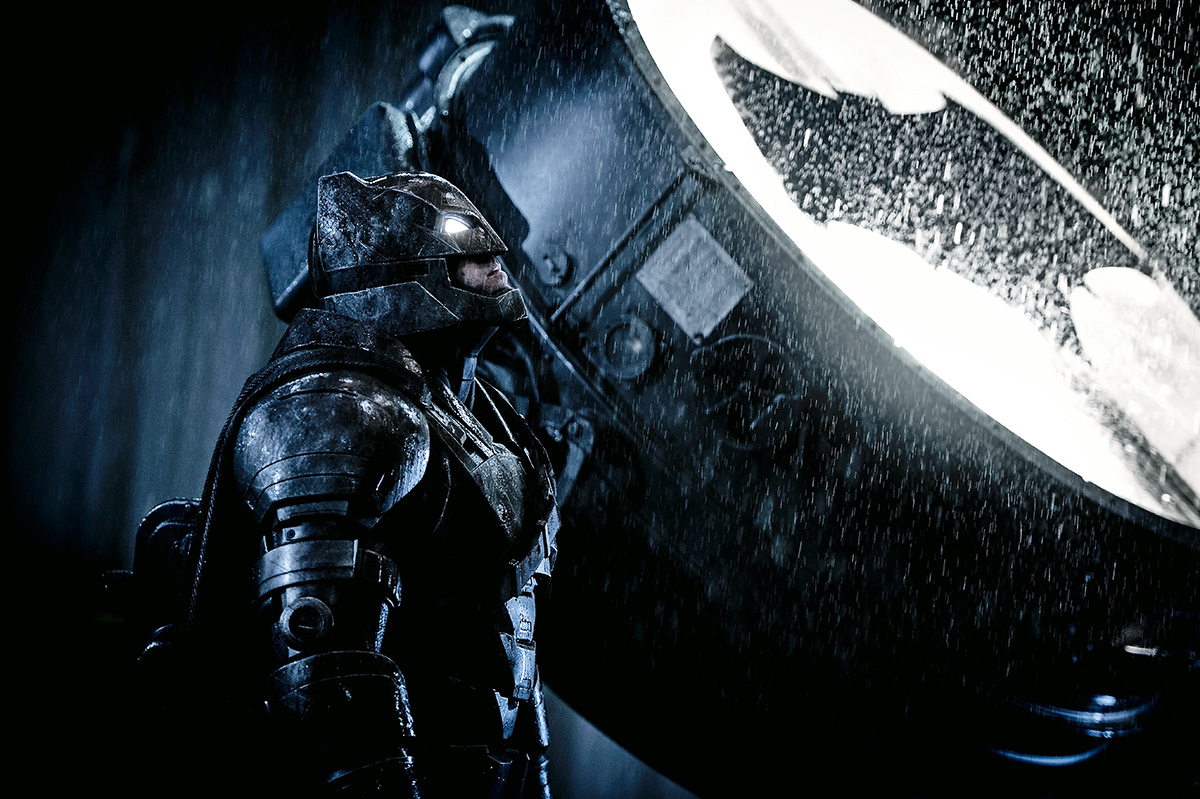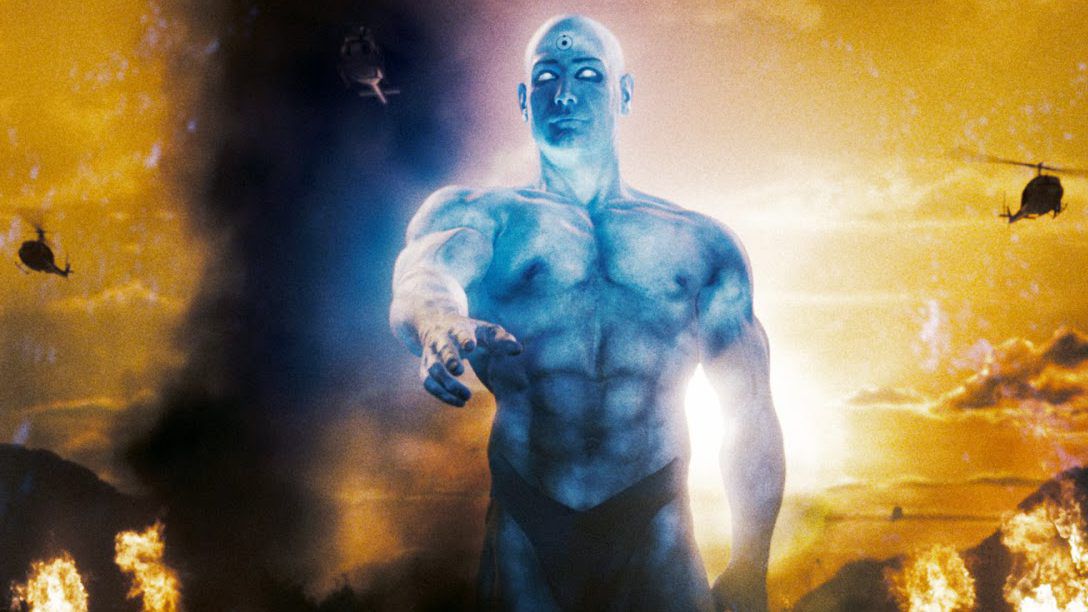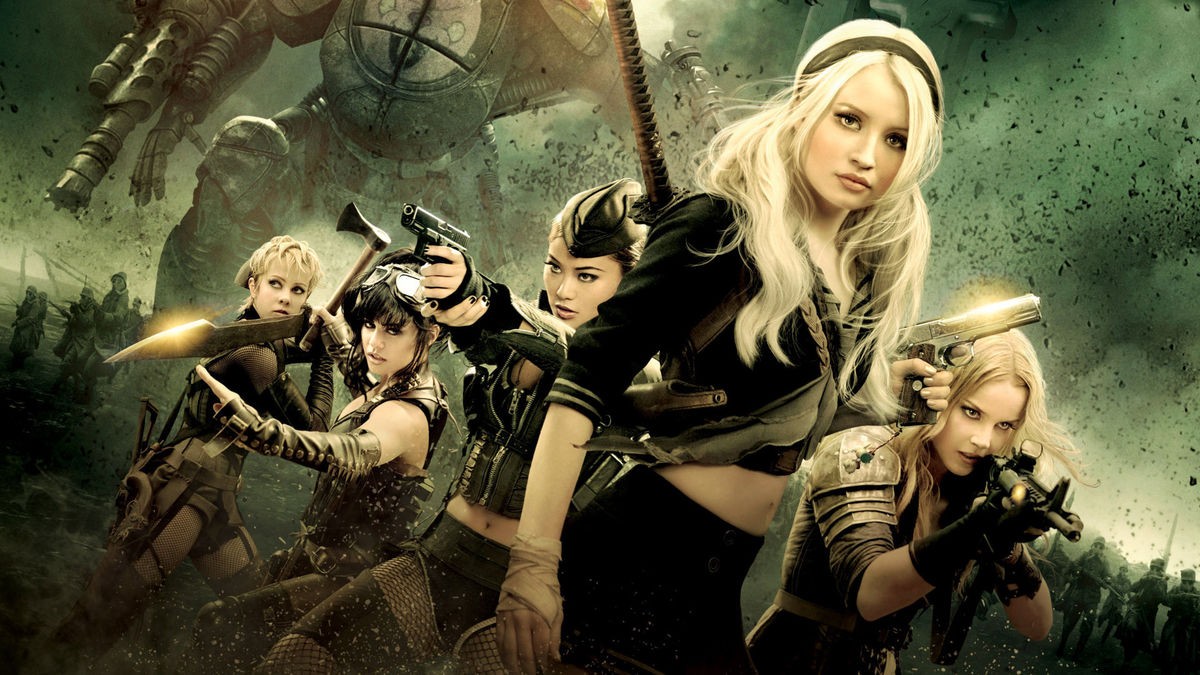Before I even begin ranking and discussing Zack Snyder’s filmography, let me lay my aesthetic cards on the table.
I love hand to hand combat action movies as well as ridiculous action movies (I included The Raid and Fast Five in the top 5 of my list of the 10 best movies turning a decade old in 2021), I love hyper-stylized movies (Drive took the number one spot on that same list), I love comic books (especially Batman), and I love genre movies that actually have some themes and ideas.
On the opposite side, I am exhausted by the trend of massive action sequences that take half an hour or more at the end of most superhero movies at this point, I get annoyed when I feel like a movie is beating me over the head with its themes (particularly if it’s preachy), and I cannot stand sequel bait.
With all that, you may have some idea of how this ranking of films will shape up. But I want to add something that I think is important given the larger cultural conversation around Zack Snyder: I consider myself a fan of Zack Snyder. I’ve never tweeted #releasethesnydercut myself, but I was hoping that the campaign would be successful. I was excited to have a reason to go through his filmography for this piece and finally see his Dawn of the Dead remake along with the director’s (or “Ultimate”) cuts of Watchmen and Batman v Superman: Dawn of Justice.
However, I (perhaps foolishly) also take some pride in the fact that I have mixed feelings on his filmography. I adore some of his movies (including his short Snow Steam Iron which I won’t be ranking) and I am incredibly disappointed by others. I’m equally frustrated by those who simply write him off as a “bad director” as those who seem to worship everything that he has produced.
So in the spirit of nuance, fandom, and critiquing the art we love, here is my ranking of Zack Snyder’s filmography.
7. Man of Steel (2013)

Man of Steel’s placement at the bottom of my ranking is based largely on my love for Snyder’s other work and his visuals generally. Man of Steel looks cleaner and crisper than anything Snyder made before. Instead of the intense grain and color saturation of his previous films, Man of Steel is shiny and desaturated (there was a lot of hubbub about this back in 2015). This can likely be attributed to Snyder working with cinematographer Amir Mokri instead of his regular collaborator Larry Fong, who shot 300, Watchmen, Sucker Punch, and Batman v Superman.
While Mokri’s involvement likely had nothing to do with the action in Man of Steel, it’s interesting that Mokri, a frequent collaborator of Michael Bay’s (including two Transformers films), shot the action sequences that are more reminiscent of Bay’s work on the Transformers franchise than any of Snyder’s films.
That action is the second problem. The scale is immediately overwhelming, the opening sequence on Krypton is hard to follow because there is so much on screen. And unlike the introductory sequences in 300, Sucker Punch, and even Dawn of the Dead (which hits the ground running), the opening of Man of Steel throws us in the deep end far too early without any basis in story, worldbuilding, or character. The final fight of the film between Michael Shannon’s Zod and Henry Cavill’s Superman looks like the stuff of Saturday morning cartoons, with them flying through the city and toppling buildings with no regard for anyone inside. And it’s not helped by the fact that the CGI makes Zod and Superman look like Gumby figures.
What’s perhaps most frustrating and disappointing about Man of Steel is that there’s actually a decent amount in the ideas and themes of the film that I find interesting. Young Clark/Kal El’s experience at school as horrifying (hearing everything, being able to see through people and walls, unable to find silence and peace anywhere) is something that I haven’t seen before and would be very interested in seeing more of. The idea that Superman is afraid to reveal himself to humanity because of how it will change our understanding of our place in the universe, and our conceptions of God, is a big idea that’s worth exploring beyond the paralleling of Clark/Kal El and God in nearly every other scene.
But sadly the film’s first half feels like a highlight reel of set pieces from Clark’s youth, where the aforementioned idea about the horror of his abilities takes up less than 5 minutes, and the second half is a relentless barrage of the oversized action that doesn’t even look good, with about 20 minutes of plot stuck in the middle.
To end on some other positives for the film: Hank, the Kent family’s blue heeler, is adorable and Michael Shannon’s wildly over the top performance as Zod is worth watching for alone.
6. Batman v Superman: Dawn of Justice (2016)

Batman v Superman: Dawn of Justice (hereafter just “BvS”) rights the wrongs of Man of Steel’s look and actually looks like a Zack Snyder movie (no doubt largely because Larry Fong is back as cinematographer). It also makes a brilliant move by starting the story proper (after a disappointing introduction that unnecessarily replays the Batman origin story) with Batman/Bruce Wayne’s perspective from the ground of the mass destruction caused during Zod and Superman’s fight at the end of Man of Steel. The audience gets a very real understanding of the collateral damage to that fight instead of the oversized spectacle that we saw in Man of Steel. This opening allows the story to set up the dichotomy between the characters, whose ideological allegories have been debated, that plays throughout the rest of the film.
That dichotomy and the allegorical debate is part of what makes BvS a much stronger film than Man of Steel, as there’s real thematic meat here both in the different worldviews of the heroes and in the extension of the ideas in Man of Steel. While the film is still overbearing in its reminders that Superman is godlike, it’s at least doing more with these ideas than Man of Steel. Instead of simply reiterating that Clark can’t reveal himself to humanity, it shows us what happens after he does.
Honestly, my greatest problem with BvS is how much I like most of it. The scene between Clark and Bruce where they discuss the morality of their alter egos is honestly one of my favorite superhero movie moments. I would be extremely excited about a feature length version of the dream that Bruce/Batman has about a post-apocalyptic world ruled by Superman with the aid of a fascist style police force.
Holly Hunter is great as the senator who actually has a nuanced view of Superman and is genuinely trying to grapple with his existence in a way that she believes is right. There are moments of sweetness between Clark and Lois here that make their relationship more than a damsel repeatedly in distress and the hero who repeatedly saves her. I even love Eisenberg’s unhinged performance as Lex Luthor. Also worth noting that the Ultimate Edition features Jena Malone, who is always nice to see even if she is underused – which she obviously is, given that she’s entirely absent from the theatrical cut.
All of this makes it hurt so much more when the final 40 minutes of the film (by the Ultimate Edition runtime) are wholly unnecessary and exhausting. The story has come to a concluding point, Superman and Batman have their titular fight (which is solid but still a bit disappointing, especially in comparison to recent animated adaptation of The Dark Knight Returns), discover they’ve been manipulated, and decide to work together. But then Doomsday arrives and the movie’s scale becomes literally astronomical and the rest of it regresses into a repeat of the overblown finale of Man of Steel.
5. Dawn of the Dead (2004)
Remaking what many consider the best zombie movie ever made is a bold choice for a theatrical feature debut. It’s always risky remaking a beloved horror film, but with Dawn of the Dead, Snyder and writer James Gunn took on an all time classic that’s beloved by genre fans and critics alike. And what’s more shocking is that they largely pulled it off.
The remake differs from the original in a number of significant ways. This isn’t a sequel, so Gunn and Snyder have to quickly establish the world and do this well with a prologue that throws the viewer, and our lead character, into the chaos of a world overcome by zombies. These zombies are also fast, more like the rage-fueled creatures in 28 Days Later than the gray lumbering ghouls of Romero’s films. The group of characters at the mall where most of the film takes place is far larger than the four characters we get in the 1978 film. The original’s thematic focus on race and consumerism is replaced by a post-9/11 concern with whether to engage outsiders with fear and aggression or empathy in a hostile world.
Though some of these changes (particularly the speed of the zombies) have led to criticism of the remake, I’d argue that they are what make the film work. A one for one remake is almost never going to be a success (see Gus Van Sant’s Psycho), and the changes from the original allow the remake to stand alone instead of existing purely in the shadow of its predecessor.
The film also shows Snyder’s trademark style already on display with significant grain, blown out colors, and a good amount of slow-motion (especially for explosions). And the fast zombies allow for the movie to be fueled by sheer adrenaline in many sequences, an area where Snyder excels.
Snyder’s Dawn of the Dead is a success, though not a major one. While both the remake and the original feel like a collection of vignettes, the remake ends up feeling longer even though it clocks in at only an hour and 40 minutes compared to the over 2 hour runtime of the original.
I also need to mention the Down With the Sickness cover that plays over a montage at one point, because I need more people to know and appreciate that that exists.
4. Legend of the Guardians: The Owls of Ga’hoole (2010)

Legend of the Guardians: The Owls of Ga’hoole (hereafter just The Owls of Ga’hoole) is Snyder’s only animated film to date. Like Wes Anderson with Fantastic Mr. Fox and Isle of Dogs, Snyder brings his singular aesthetic with him to the animated world.
In the opening credits, we get a slow-motion close up of a feather falling off of an owl before speed ramping to follow the owl in a drop. In fact, The Owls of Ga’hoole may have the most slow-motion of any of Snyder’s films, with a slow-motion flying in rain and lightning sequence having a strong claim to being the peak Snyder visual, not necessarily quality wise, but certainly signature wise.
It’s also Snyder’s only (as of now) fully high fantasy film. Beyond the talking owls who wear armor, there’s talk of kingdoms, old legends being true, and unexplained magic metals. As well as a sibling rivalry central to the larger battle between good and evil that brings to mind The Lion, The Witch, and The Wardrobe and Edmund’s betrayal. And of course, the evil Pure Ones’ lands look almost exactly like Peter Jackson’s Mordor in The Lord of the Rings trilogy. Snyder’s well suited to this kind of material as the unreality of the story allows him to run wild with his heightened aesthetic.
The story isn’t anything particularly new: the evil Pure Ones seek to stratify owl society based on “superior” and “lower” species and our young heroes must alert the legendary Guardians of Ga’hoole to this plot so that they can fight back. But any children’s film that seeks to (however hamfistedly) lecture on the evils of “purity” talk is going to work for me. It also helps that the movie has an absolutely stellar voice cast with Sam Neil, Helen Mirren, Joel Edgerton, Essie Davis, Geoffrey Rush, Hugo Weaving, and as a Saw franchise fan it’s very fun to hear co-creator Leigh Whannell voice an owl.
Overall, The Owls of Ga’hoole is one of the best kid-friendly action movies. The action scenes are thrilling, surprisingly well choreographed, and of course fantastically directed. And while the “racism is bad” lesson is extremely on the nose, it’s still a good lesson. My most significant complaint about the movie is a training montage set to Owl City’s “To the Sky” that is extremely tonally jarring. Things only become more confusing when you learn that the song was apparently made exclusively for the movie. If you want to talk about studio mandates ruining Zack Snyder movies, this needle drop needs to be in that conversation.
3. Watchmen (2009)

As of now, Watchmen is the best superhero movie Snyder has made and my concern is that nothing (including his cut of Justice League) is going to be as successful. Watchmen is an epic that feels worthy of its 3 hour director’s cut runtime largely because it has so much story to tell.
While the scope of that story leads to the movie leaning somewhat heavily on flashback sequences, there’s so much of this world that every time we get to see more of it from a different perspective, it only deepens our immersion in it without distracting from the main plot.
The greater focus on action in the movie over the graphic novel only makes it more fun to watch as opposed to the slog of Snyder’s DC proper films. A large part of that is that the action is more grounded (literally) with only one superhuman character in Dr. Manhattan (Billy Crudup) and the others simply using their fists and sometimes guns to fight. And unlike BvS and Man of Steel, Watchmen doesn’t overstuff its final hour with huge scale action at the expense of everything else.
Watchmen may also engage with the themes of Man of Steel and BvS better than those movies. Through news reports, conversations we hear between “normal” human side characters, and attention to those who are close to Dr. Manhattan, Watchmen better shows the effects that a godlike creature’s existence has on different levels of our world than Snyder’s later attempts. Rorschach (Jackie Earle Haley) is essentially a more extreme version of Batman than Batman, especially the Dark Knight Returns version of Batman that Snyder has said was an influence on BvS.
Watchmen is also the closest that Snyder has ever come to making an actor’s film. While it’s certainly not a small scale drama focused on performances, it’s the only movie of his that has made me consider how fantastic some of the performances are, particularly Haley and Carla Gugino as Sally Jupiter/Silk Spectre.
Perhaps most importantly (or at least most relevant to its ranking here), I also count myself among the defenders of the controversial ending of the movie and will argue that it improves upon the original graphic novel ending. Though I have no defense of the incredibly memorable-in-a-bad-way sex scene set to Leonard Cohen’s “Hallelujah.”
2. Sucker Punch (2011)

Sucker Punch may be Snyder’s masterpiece. While it doesn’t rank first among his films for me, it’s hard to think of any other piece of cinema by any director that as clearly sets out a sort of aesthetic mission. As of now, Sucker Punch is also the only film that he has original story and screenplay credits on so it’s the closest thing we have to a Snyder auteur film.
I don’t know if Sucker Punch succeeds in its exploration of the themes that it takes on, from women’s agency in a hostile world to the video-gamification of film, but it’s certainly trying to do a lot and that ambition is admirable. But what’s more important is that it all just looks so cool.
The overarching story of a young woman brought to an asylum that she reimagines as a brothel within which she then imagines even more fantastical action setpieces sounds ridiculous but actually works well. And these multiple layers of reality allow Snyder to explore a variety of action styles and genre aesthetics. No other movie places sequences with giant samurai statues (or are they robots?) alongside trench warfare scenes with steam-punk zombies, or sci-fi sequences with antagonists who look like they walked off the set of I Robot and high fantasy scenes with orcs and a dragon.
The musical number in the extended cut is one of the most fun musical numbers I’ve seen outside of Burlesque, and I cannot wrap my head around why it was cut from the theatrical version. Oscar Isaac and Carla Gugino are great together, and we get to see a number of the performances that we only hear about in the theatrical.
Sadly, the act three come-down hits way too hard. After the final fantastical action sequence, the film takes a turn away from the fun romp that we’ve been enjoying for the last hour and a half or so and becomes unnecessarily brutal before ending on what’s meant to be bittersweet but just feels bitter. Were it not for this third act shift, Sucker Punch might be my number one Zack Snyder film.
1. 300 (2007)

While Sucker Punch is the closest to an auteur film we have from Snyder, nothing has been more immediately distinct than the overbearing visual style of 300. Snyder and Fong succeed in bringing Frank Miller’s panels to life and create a world that’s entirely made up of alternately gold and gray skies, bright red capes, deep red blood, and nearly monochromatic hues of black, white, and silver.
The fact that they add to those panels some of the most memorable action scenes of the 21st century makes 300 an action masterpiece and certified classic. Of all Snyder’s films, including the much discussed BvS, 300 has had the most significant cultural impact. From the memification of “This is Sparta!” to introducing a new way of shooting action that’s now the template not just for Snyder’s films, but all of the action in the DCEU and an ever growing number of action movies beyond. Google 300 and you’ll see pieces praising it as the best action film of that year and the most influential film (of any genre) of the new millennium, albeit almost always with a significant (if not primary) discussion of the film’s politics.
While the film pads out the slim story of the graphic novel with those incredible action sequences that have made it a modern classic, it also adds an unnecessary subplot that follows queen Gorgo (Headey) as she attempts to convince the Spartan council to send more troops to support her husband and the titular 300. To the film’s credit, it mixes this subplot well and Headey is more than up to the task of starring in her own storyline. Headey is also only one of the many fantastic actors in the film, some of whom would (like her with Game of Thrones) go on to become household names, including Michael Fassbender and of course Gerard Butler.
Beyond its influence, and the impact that it has had on action and comic book movies since its release, 300 remains Zack Snyder’s best film because it so perfectly showcases what he does best: creating stunningly distinct worlds and crafting exhilarating action sequences.
READ NEXT: Make The Case: Ranking the 10 Best Godzilla Movies of All Time
Some of the coverage you find on Cultured Vultures contains affiliate links, which provide us with small commissions based on purchases made from visiting our site.


